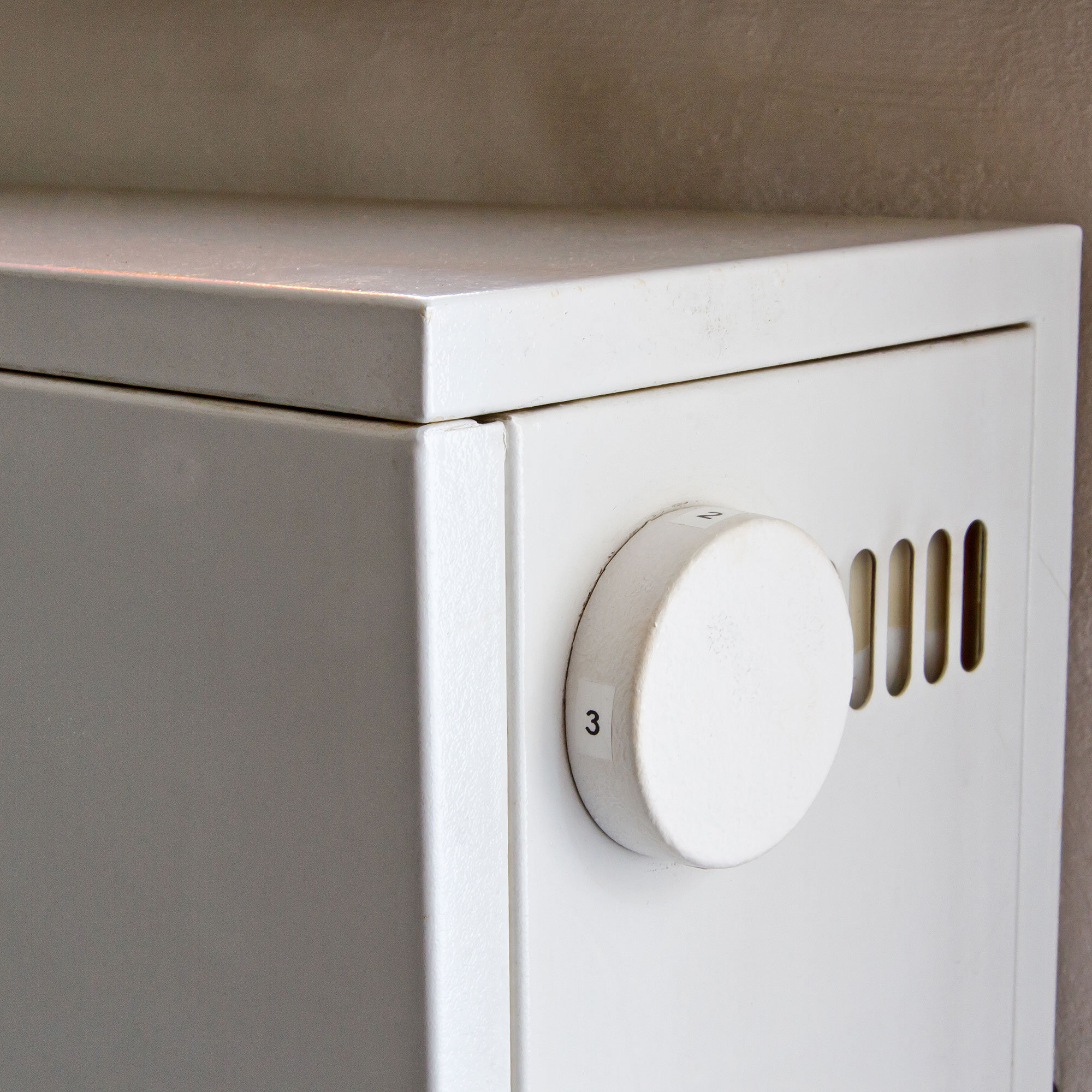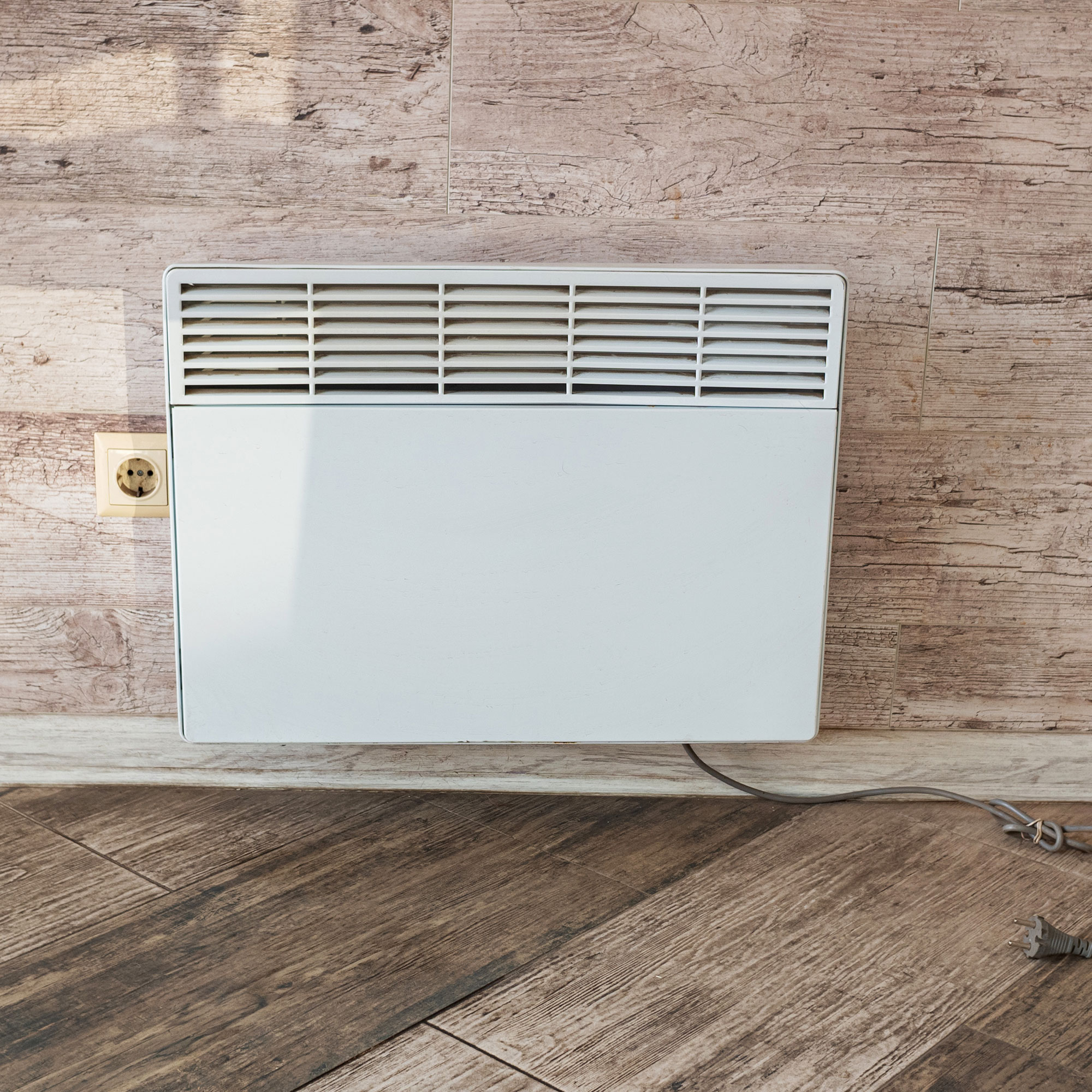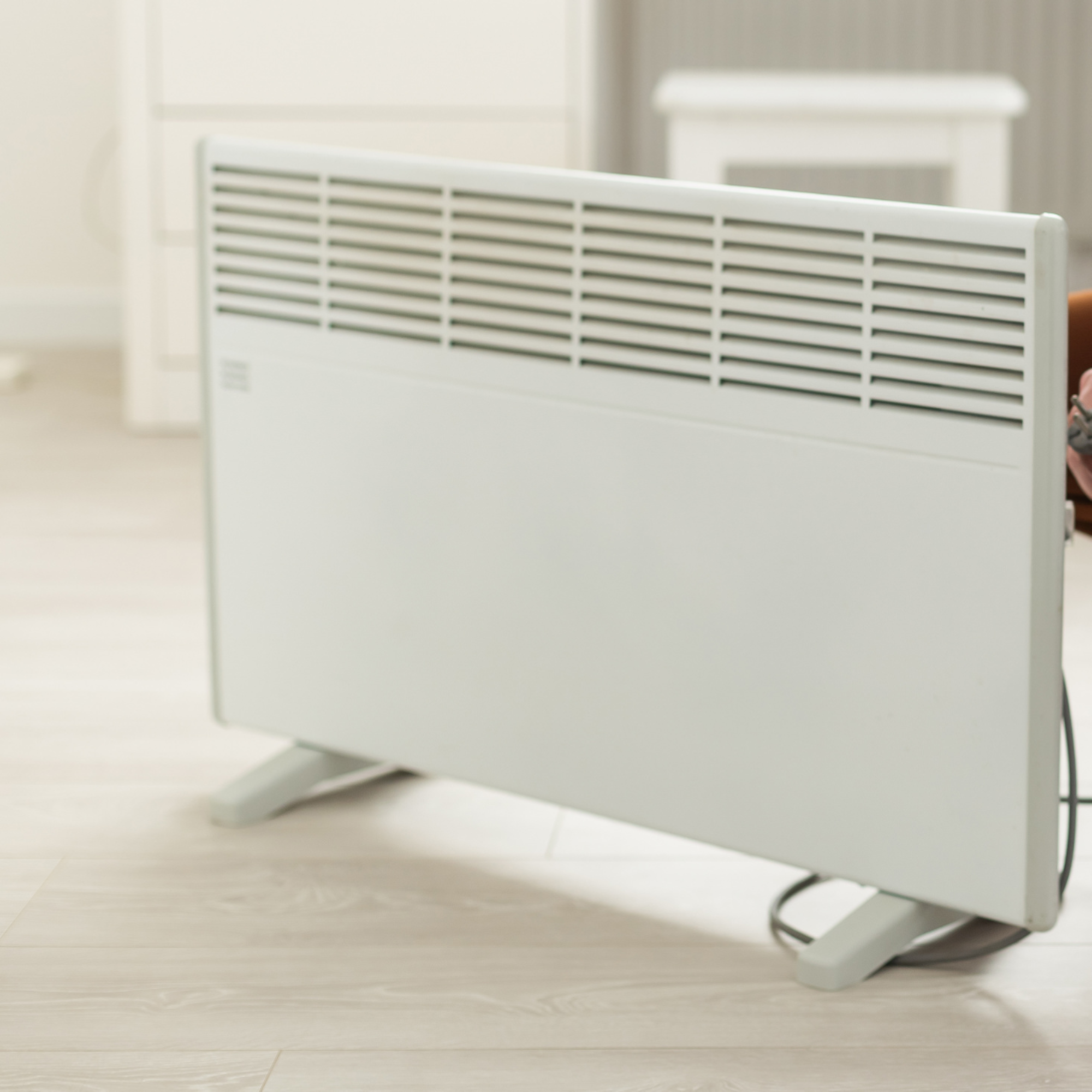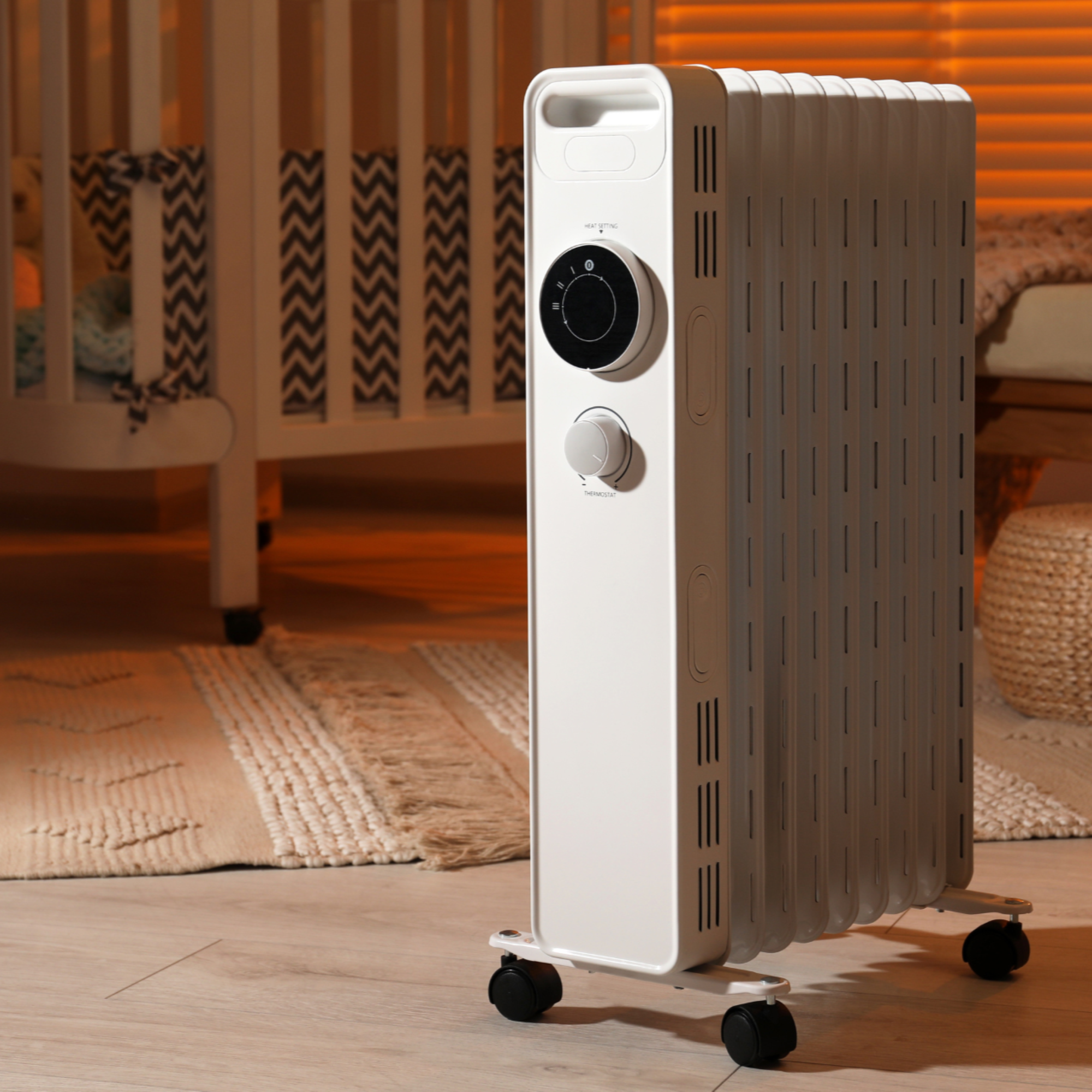
In winter most of us are looking more closely at the best way to heat our homes. Storage heaters are one of the unsung heroes when it comes to keeping your house warm. Most storage heaters look like radiators but function a little differently, so you will need to know how to use a storage heater property to make sure it's working efficiently and saving you money during the colder months.
Storage heaters are up there with the best electric heaters for keeping your house warm in winter. They are more expensive to buy, but we spotted the heater featured above from Creda Heating at the more affordable end with prices starting at £462 at the Heatershop.
Think of them of as an alternative to a radiator due to the cost and they are usually wall-mounted. Despite the upfront cost, the bonus is that they heat overnight helping you save money, but only if you know the best way to use them.

How to use a storage heater
Storage heaters are an alternative to radiators, and when used correctly, they can help you save energy. We've asked heating and energy experts how to use storage heaters and get the most out of them, especially during the colder months. Here's everything you need to know.
How do storage heaters work?
'Storage heaters use electricity to heat ceramic or clay bricks, which sit inside the heater, at night,' explains Jon Bonnar, Director, Cotswold Energy. 'These bricks then release the heat during the day to warm up your home.'
Ceramic or clay bricks can hold a lot of heat. Storage heaters make use of these by storing heat inside them, to be released during the day, which is why they're sometimes referred to as night storage heaters.
How to use storage heaters: input
The input heat control tells your storage heater how much heat to store up. The higher the input setting is, the more heat it will store, and the more electricity it will use – meaning your energy bill will also be higher. Jon advises to adjust the input setting of your storage heater according to the time of year.
'You’ll typically want to set the input dial between 1 and 3 during the autumn, depending on how well-insulated your home is,' he explains. 'You’ll then want to increase this up to 5 or 6 during the winter. And as winter fades and we go into spring, you should gradually decrease it again.'

Try these settings for a couple of weeks and see how well-heated your home feels - you might find the storage heater is releasing more heat than necessary. If you've got good roof and loft insulation for example, you may be able to lower the input settings for the storage heater to work efficiently.
'In the summer, if you find that you don’t need any heating at all, you can turn the dial right down and switch the storage heater off at the plug,' Jon explains. 'The input dial won't automatically store heat during the day (when it’s more expensive to do so), so don’t worry about what it’s set to during these hours.'
How to use storage heaters: output
The output heat control tells your storage heater how much heat to let out during the day. The number you set it to therefore impacts how quickly the heat will be released.
'Make sure to set this to ‘off’ or 1 at night time – otherwise, you’ll waste money heating the house while you’re asleep and waste heat that you need for the following day, Jon says.
The output settings should be determined by when you need your house to be heated during the day. If you’re out all day for example, you can keep the output low at 1. You'll be able to turn it up when you return home and still have enough heat left to use.

'If you’re going to be in the house all day, leave the output on 1, 2 or 3 – so the heat will release gradually – and turn it up as and when you start to feel cold,' Jon advises. 'This will help to ensure you have enough heat for the whole day. Once your home is warm enough, turn the output down again to avoid wasting heat.'
'Figure a schedule that works for you,' Les from Bionic adds. 'Turning storage heaters off when you don’t need heating, and using the heater as and when you need it during peak hours will help you save on energy costs.'
Working with your tariff
It's helpful to understand your energy tariff when learning how to use a storage heater. Most people in the UK are on the 'Economy 7' tariff, which offers cheaper rates for off-peak hours and more expensive rates during peak hours. The off-peak hours are usually between 11pm and 7am or 12am and 7am, but it can vary depending on where you live - check with your supplier if you're not sure. Your storage heater will generate heat during the off-peak hours.
'Many storage heaters have a ‘boost’ function which uses peak-rate electricity to warm up your home if you run out of heat on cold days,' Jon explains. 'But be aware this is typically very expensive to use. If you’re experiencing a particularly cold spell of weather, it’ll be cheaper to set the ‘input’ dial to max overnight, so that you’ve got more heat to use the next day.'

Are storage heaters energy efficient?
'Electricity is more expensive than gas, even when you’re using night time (off-peak) rates, as storage heaters do,' Jon Bonnar explains. 'This means that storage heaters are only efficient, price-wise, if you don’t have access to mains gas. However, they’re generally cheaper than other types of electric heaters.'
If you have an idea of how much electric heaters cost to run, you'll know that storage heaters are economically more efficient, because they make use of off-peak electricity. Running on cheaper night-time tariffs instead of regular day-time tariffs means you can heat your house at a lower cost.
'It is however important to check the energy efficiency rating of the storage heater before you buy,' says Les Roberts, Energy Expert at the comparison site Bionic. 'Some heaters are designed with better features like better insulation or smarter controls, making them more efficient.'
You should therefore opt for a storage heater with the best efficiency rating your budget allows.
FAQs
Do you leave storage heaters on all the time?
During autumn and winter, it's better to leave your storage heater switched on all the time, so that it can generate and store heat every night, and release this during the day.
In spring and summer, it isn't necessary to have the storage heater on all the time. You probably don't switch the heating on every day in the warmer months, and it works the same way with a storage heater.
'It's important to switch your storage heater off when you don't need any heating, as even if the input and output are set to 1, it may still store and release a small amount of heat and add to your electricity bills unnecessarily,' says Jon Bonnar.
How do you you use storage heaters efficiently?
'The key to using your storage heater efficiently is in the controls and setting them correctly to avoid wasting heat,' Jon says.
The lower the input and output settings, the less electricity your storage heater will use, so try to avoid turning this up higher than necessary. Trial the lower settings of 1, 2 and 3, then increase this if you find your house isn't warming up enough.
You can also use your storage heaters more efficient by adjusting the settings room by room, as opposed to setting multiple heaters up in the same way. Set the input setting at a higher level in rooms you use more often, and lower in rooms that are less frequently used.
It's also important to leave a gap between your storage heater and any furniture. This will allow heat to move more freely, meaning the heater can warm the room up more efficiently.
Now you know how to use a storage heater efficiently, you can use enjoy a warm and toasty house all winter long!







